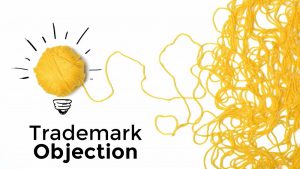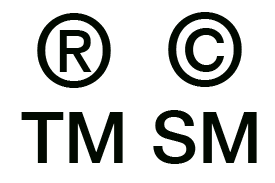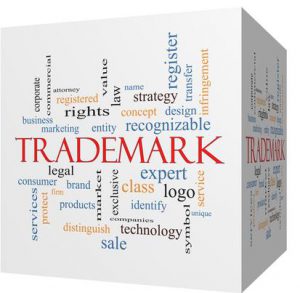Procedure to be followed by the registrar – Trademark Registration in Cbe
Procedure to be followed by the registrar:- Trademark registration in Coimbatore

The procedure to be followed by the registrar is set out in rules 37 and 38.
Irrespective of whether an application is for registration of the mark in part A or part B of the register, the tribunal has to consider the extent to which a trademark is inherently distinctive or is inherently capable of distinguishing the goods of the applicant; and the extent to which the trademark is, in fact, adapted to distinguish the goods of the applicant or is capable of distinguishing the same.
For the registration of a trademark for goods and services, the petitioner sought registration. Examination report or letter had not forwarded to the petitioner or its advocate. It was actually placed on the website of a respondent, registrar of trademarks. The respondent is under obligation in order to communicate any objection or proposal in writing to the applicant.
Rule 38(4) of the trademarks rules, 2002 by itself does not require the applicant for registration to inspect the respondent’s website.
The petitioner cannot be imputed with the knowledge of the said letter. Posting of the letter on the website of the respondent doesn’t constitute communication of objection or proposal in writing which is required by rule 38(4) of the trademark rules, 2002. The application of the petitioner cannot be abandoned under section 132 of the trademarks act, 1999.
Proposed to be used by him:
These words mean proposed to be used by the proprietor or by a registered user.
Registrar to hear applicant before objecting and objections:

If, on consideration on the application, and of any evidence of use or of distinctiveness or of any other things which the applicant may or may not require to furnish, if the registrar has any reason to object the acceptance of application or proposes to accept it subject to such disclaimers, conditions, amendments or limitations as he may think right to impose the registrar would communicate such objection or proposal in writing to the applicant (rule 39(1)). If the communication is within three months, the applicant would not amend his application according to the proposal aforesaid, or submits his observations to the registrar or apply for hearing the application that shall be deemed to have been abandoned (rule39(2)).
Transliteration and translation:

If a trademark contains a word or words in character other than roman, unless the registrar directs, endorsed on the application form and copies thereof and on each of the accompanying representations, sufficient translation and transliteration to the satisfaction of the registrar of each of such words and every endorsement may state the language to which the words belong and that could be signed by the particular applicant or his agent as rule 33(1). If a trademark contains a word or words in a language other than English, the registrar would have asked for an exact translation together with the name of the language, and such name and translation, if he requires, may be endorsed and signed as the aforesaid rule (33(2)).
Living persons or persons recently dead:
The name or the representation of any person who appears on a trademark, the applicant will, if the registrar requires, furnish him with the consent in writing of such person in case he is alive or dead with in a period of twenty years prior to the date of application for the registration of trademark of his legal representative, in case, to the use of the name of representation and in default of such consent, the registrar would have refused to proceed with the application for registration of a mark (rule 34 and section 14).
Applicant-what to do?

Before the application filing, it would be helpful for the applicant in order to apply to the registrar for primary advice as per section 103, this is to whether the trademark appears to the registrar prima facie which is to be inherently adapted to distinguish or capable of distinguishing, as the case may be. He may do well to search the register with a view in order to ascertain whether there exist another similar marks or marks already on the register. Precautions for this are necessary particularly when a trader desires to start using a mark at once. He needs to do well to bear in mind the relevant section in the act which relates to requisites for a valid registration, prohibition of registration, etc. The application also goes through the rules which are relevant to the said sections.
Claiming to be the proprietor:

This expression means “Claiming to be registered as the proprietor” and involves the assertion that there is no one else having a better claim to be registered. In the case of a trademark not in use, there can be no such thing as proprietor of the mark. The expression therefore re refers to the qualification of the applicant to register.
When he makes a false declaration, it is enough to consider the application as a dishonest or fraudulent; it leads to disentitling the applicant to register as per the section 11(e). In such a case, it will prevent a registration becoming conclusive after seven years under section 32. An exception to this section is provided by section 45 which permits an application to be made by a person who does not use or propose to use the trademark but who, to the satisfaction of the registrar, proves his intention to assign the trademark to a company which is about to be formed and registered under the companies act with a view to enable the company to use the mark in relation to the particular goods.

Other exception which has been provided by section 29(1)(b) of the united kingdom act, 1938, permits the registration even though the applicant doesn’t use or propose to use the mark provided that he makes an application for someone else to be registered user thereof. There is no corresponding provision in the Indian act.
To claim a proprietorship for a trade it is not necessary that a mark should have been used for a considerable length of time. Even a single use with the actual intent to continue such use confers a right to such mark as a trademark.
Presently, the Indian firm has been using the mark “sharp” with intent to continue such usage in relation to the transistor radio which sets apart from other goods.

If the claim is made in good faith the application should be received even though it may turn out subsequently that there are objections to the registration where the opponents had previously put forward a claim to be the proprietors of the identical trademark but withdrew their application for registration, on opposition being threatened by the applicants, it was held that they could not claim to be the proprietors of the mark. The person to apply must be the proprietor. His importer of an agent (acting in his own right) cannot apply.
The person claiming may be the manufacturer or an importer or a trader dealing in any goods selected by him. It is possible for an importer to get a valuable reputation for him and his wares by his care in selection or his precautions as to transit and storage, or due to his local character, the article may acquire a value by his testimony to its genuineness. There is no need to say that the principles which apply to a person selling goods of his own selection.
An application was filed for registration of trademark of the word PRIMAXIN. Opponent failed to establish proprietorship of the trademark. Thus, the objection was not sustainable. The opposition was disallowed.
Claim to proprietorship:
Application for registration of trademark MICON in respect of Microprocessor control system was made while the opponent used the trademark MICO since 1950. Applicants were not having proprietary rights in a trademark. Thus, in absence of any evidence to establish the use of the mark in the country, the applicants claim for proprietorship in the trademark failed. But where the applicants have proved the claim of their proprietorship over the mark applied for, and the opponents have not established the user and reputation or their mark by documentary evidence to relent the claim of the applicants, the opponents would fail. The earlier decision being between the same parties in respect of the same issue is to operate a thing which has already been judged (res-judicata) of any subsequent proceedings between the same parties for the same issue.

The onus is heavily on the applicants to establish that the said decision of the high court has lost its binding effect because the evidence attached to the said decision had ceased to exist. Word BHAI has become publici juris; hence the Delhi high court imposed the condition of disclaimer in respect of the word BHAI in favor of the applicants.
Not claiming to be the proprietor:
The test for the purpose of determining whether a trademark claimed by a person other than the manufacturer of goods is registrable or not – Is the trademark used in respect of something done in the process of manufacturing or finishing the goods before they reach the hands of the public, or is it some process applied to the goods after they have passed into the hands of the public, which indicates a temporary connection with the goods as, for instance, in case of darning or laundering of goods. When applying to that test, a mark relates to the process of embroidering on goods before they are sold, can be registered as a trademark.
Used or proposed to be used:

Old section 2(2(a) and (b) defines the term “use of a mark” reference to use a mark has to be construed as a reference to the use of a printed or other visual representation of the mark and reference to the use of a mark in relation to goods shall be construed as a reference to the use of the mark in any physical or in any relation whatsoever to such goods. The use of this section must be the use of a visual or a printed representation of the mark on the goods.
A mere use in an advertisement has been held not to be a use under this section. Proposal to use means some definite and present intention to deal in certain goods or description of goods and not a mere general intention of extending the business at some future time to anything which the applicant may think desirable.
In the case of a permitted user of a trademark, his use being only a permitted use, he cannot make the application except jointly with the proprietor.

Only a person claiming to be the proprietor of a trademark used by him or proposed to be used by him can make an application to the registrar for the registration thereof. According to this provision, not only a person should claim to be the proprietor of a trademark but also he should prove that he has used it as such proprietor on his goods. A sole distributor is not as such entitled to apply for registration.
The person claiming to be the proprietor has to establish that the trademark is used or proposed to be used by him.
As per the section 45 of the trade and merchandise act, 1958, is, therefore, in fact, one exception to old section 18 of the act so far as the limitation of the expression “by him” is concerned in old section 18(1) of the act. Permitted user of a trademark by a registered user under the old section 48 of the act expressed to be a user by the registered proprietor by virtue of the clear terms of old section 48(2) of the act.

From old section 18 to 22, there is one thing that is very clear, when an applicant makes his application for registration, the onus in the first place is upon him to show that he is in the law prima facie and he doesn’t infringe the section 8 to 14 of the statute. It is possible when he discharged the primary onus that the application has been accepted by the registrar under section 18(4) of the statute. The registrar may refuse the application at that stage or may accept it absolutely or may accept it subject to amendments, conditions, limitations or modifications as he thinks fit.
Here to understand is, when he accepts that, the acceptance prima facie shows as the applicant crosses the preliminary hurdles in the onus unless it has been withdrawn under the section 19 of the statute